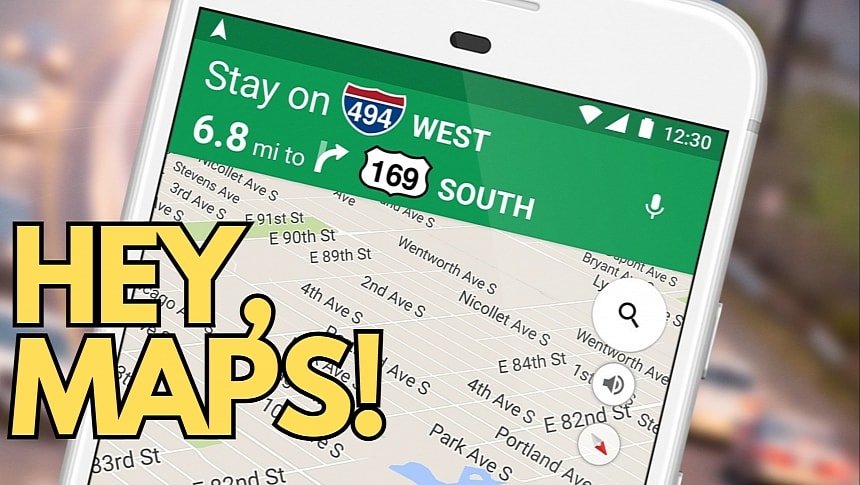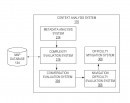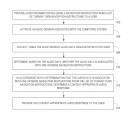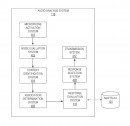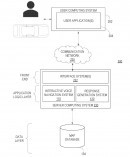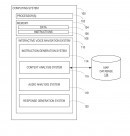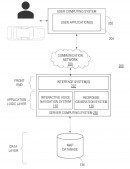One of the key features of Google Maps navigation is the spoken directions, which allow users to follow a suggested route without looking at the screen.
The voice guidance is integral to the experience with the app, reducing distractions behind the wheel and making it easier for drivers to determine which way they must go.
The turn-by-turn guidance is already deeply integrated into the driving experience on apps like Android Auto and CarPlay, and when the mobile device is connected to the vehicle, the sound level of the playing music or the radio is automatically reduced to make it easier to understand the spoken directions.
However, Google has recently found a more innovative way of improving turn-by-turn guidance in Google Maps.
A patent called "interactive voice navigation" describes how a driver can receive Google Maps navigation guidance but also interact with the app to obtain more information.
Before I delve into this patent, it's important to understand how turn-by-turn guidance currently works in Google Maps.
When you enable navigation, Google Maps offers audio guidance to let you drive to the destination without looking at the screen for the highlighted route. The spoken directions are basic and include essential information. For example, the app could tell you to "turn right in 100 meters," sometimes offering additional guidance as you approach the recommended turn.
If you miss the spoken direction and don't look at the screen, you could also miss the upcoming turn, so Google Maps will have to find a new route to your destination.
The idea (based on a previous version of the same patent) proposes a Google Maps update allowing the driver to interact with the app when the audio guidance isn't clear or the user needs additional data. Thanks to this new filling, it becomes clearer how Google wants to improve Google Maps in this direction (spoiler alert: Gemini will play the key role).
Google starts with a basic example. "At the roundabout, use the first exit" is the instruction provided by Google Maps to the user. The driver hears the audio guidance but doesn't understand it clearly due to external noise or someone else talking inside the car. The driver can request Google Maps to repeat the guidance, with the application then saying the same phrase, sometimes at a higher volume level.
The driver can also request additional information and ask Google Maps if the upcoming turn is "the first or the second intersection." The navigation app looks at the route, determines the answer to the driver's question, and plays it over the vehicle's speakers. Google calls these "supplemental navigation instructions," and their goal is to "clarify information with the navigation instruction."
The driver can ask for supplemental navigation instructions repeatedly, albeit Google Maps would only be able to provide a limited number of answers if the vehicle is in motion. The application can update the answers according to the car's location – for example, if the user needs more information regarding an upcoming turn and asks if it is the first or the second intersection, Google Maps can offer an answer according to where the car is located when the supplemental navigation instruction is generated.
Like Google Assistant, Google Maps would need permission to listen to what you say. However, Google explains that the navigation app doesn't need to "always" keep a communication channel enabled, as a so-called "audio sensor" would only be open after offering navigation guidance.
This means Google Maps would start listening for voice commands after you hear the app telling you which way to go. If no voice request is submitted for a pre-configured threshold, Google Maps closes the audio sensor and reopens it when speaking the next navigation instruction.
Overall, Google's idea makes sense. Navigation apps offer valuable information for driving to a destination, but their instructions aren't always the most straightforward. In some cases, drivers can't hear the route guidance due to background noise, other people talking, emergency vehicles in proximity, or other factors. The proposed feature resolves this shortcoming with a straightforward approach, giving users the option of interacting with Google Maps using voice.
However, the update isn't as easy as it sounds. The search giant must train Google Maps to learn a natural conversation language, as drivers use different words to ask for supplemental navigation instructions, sometimes not even pronouncing the words correctly. Google Maps can use technology already bundled with Google Assistant, albeit I'm certain Google is already looking into ways to make Gemini more integral to the navigation experience.
Gemini could power the interactive model in Google Maps, especially as Google's final purpose is to "generate an audio clip that simulates a human voice speaking the instructions associated with the selected instruction." This means that Google Maps must sound and feel more like a human being. What better way to do this than with the most advanced digital assistant in Google's yard?
The proposed technology is still in the patent stage, but I'm almost certain Google will explore ways to make it happen in the coming years. You can find all technical details and additional information about its modus operandi in the document attached after the jump.
The turn-by-turn guidance is already deeply integrated into the driving experience on apps like Android Auto and CarPlay, and when the mobile device is connected to the vehicle, the sound level of the playing music or the radio is automatically reduced to make it easier to understand the spoken directions.
However, Google has recently found a more innovative way of improving turn-by-turn guidance in Google Maps.
A patent called "interactive voice navigation" describes how a driver can receive Google Maps navigation guidance but also interact with the app to obtain more information.
Before I delve into this patent, it's important to understand how turn-by-turn guidance currently works in Google Maps.
If you miss the spoken direction and don't look at the screen, you could also miss the upcoming turn, so Google Maps will have to find a new route to your destination.
The idea (based on a previous version of the same patent) proposes a Google Maps update allowing the driver to interact with the app when the audio guidance isn't clear or the user needs additional data. Thanks to this new filling, it becomes clearer how Google wants to improve Google Maps in this direction (spoiler alert: Gemini will play the key role).
Google starts with a basic example. "At the roundabout, use the first exit" is the instruction provided by Google Maps to the user. The driver hears the audio guidance but doesn't understand it clearly due to external noise or someone else talking inside the car. The driver can request Google Maps to repeat the guidance, with the application then saying the same phrase, sometimes at a higher volume level.
The driver can ask for supplemental navigation instructions repeatedly, albeit Google Maps would only be able to provide a limited number of answers if the vehicle is in motion. The application can update the answers according to the car's location – for example, if the user needs more information regarding an upcoming turn and asks if it is the first or the second intersection, Google Maps can offer an answer according to where the car is located when the supplemental navigation instruction is generated.
Like Google Assistant, Google Maps would need permission to listen to what you say. However, Google explains that the navigation app doesn't need to "always" keep a communication channel enabled, as a so-called "audio sensor" would only be open after offering navigation guidance.
This means Google Maps would start listening for voice commands after you hear the app telling you which way to go. If no voice request is submitted for a pre-configured threshold, Google Maps closes the audio sensor and reopens it when speaking the next navigation instruction.
However, the update isn't as easy as it sounds. The search giant must train Google Maps to learn a natural conversation language, as drivers use different words to ask for supplemental navigation instructions, sometimes not even pronouncing the words correctly. Google Maps can use technology already bundled with Google Assistant, albeit I'm certain Google is already looking into ways to make Gemini more integral to the navigation experience.
Gemini could power the interactive model in Google Maps, especially as Google's final purpose is to "generate an audio clip that simulates a human voice speaking the instructions associated with the selected instruction." This means that Google Maps must sound and feel more like a human being. What better way to do this than with the most advanced digital assistant in Google's yard?
The proposed technology is still in the patent stage, but I'm almost certain Google will explore ways to make it happen in the coming years. You can find all technical details and additional information about its modus operandi in the document attached after the jump.
